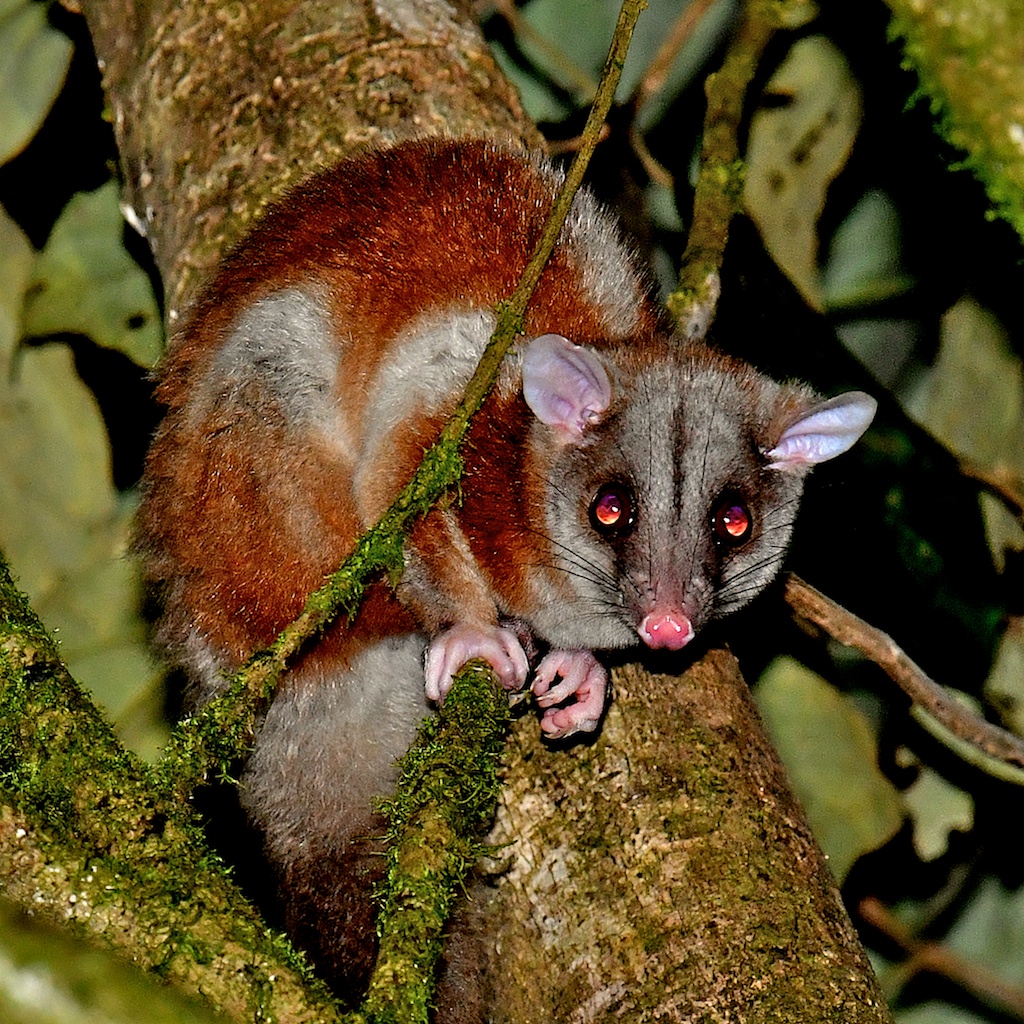
Nicaragua 11 Dec to 16 Dec 2017 (56 spp incl Tricolored Bat)
Nicaragua 11 Dec to 16 Dec 2017 (56 spp incl Tricolored Bat)
In December 2017 I did a six-day trip to Nicaragua, the trip’s brevity being due to work obligations on each end. I also was rushing a bit given that Jose Gabriel, the famous Yapok-catcher and King of Brazilian Bat Netting, starts graduate school in Arizona in Jan 2018. Arizona’s gain is Nicaragua’s loss; after he starts school and related field work, he won’t be home very often to guide.
This was my first visit to Nicaragua but I hope not the last; if you have been to Panama or Costa Rica, the terrain and general species will be familiar. Nicaragua is better known to surfers than to birders or eco-tourists but has strong potential to be a great neotropical destination.
We did not try for yapok this time. Because I had less than a week, we had to narrow our radius. (Besides, I promised to save that one for Phil Telfer and Venkat Sankar.)
While we had a fun time each day, the trip list is 20% smaller than it might have been due to a string of bad luck. In the lowlands, high winds limited bat net success. In the mountains it was rain plus wind that did us in. At Masaya Volcano, our after-hours access was rescinded by the bureaucracy, so I didn’t get to go up and see the red glow, though I had a chance quickly to tick two bats netted by others during survey work.
Throughout the route, two prior storms—one this fall, one the previous fall—had washed out roads, uprooted roost trees, and in the case of the El Abuelo Caves, made access there utterly impossible. This last was a bit of a shock to Jose Gabriel and his chums Maynor and Luis; even being willing to go into the swamp up to their waists didn’t let them find a route through the fallen trees, thick vines, and flooded landscape. Here the guys are on the shore of the big lake, trying to figure out what to do. (We already had had to leave the car about a kilometer away.) I knew it was going to be serious thrashing when they left their cell phones with me before trying again.
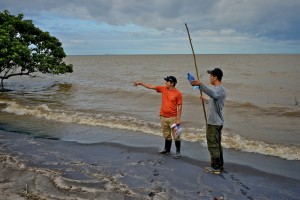
Because of these problems we missed loads of expected stuff: we had no sloths at all and we had only one monkey species (howler), only one skunk (hooded), and many of my targets just could not be located, despite Jose’s best efforts. He really is an amazing field biologist. He did his best.
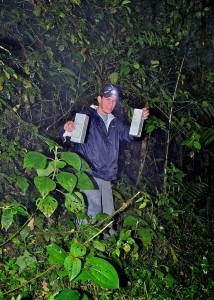
Site 1
We started at the village of El Ostional (“the oyster beds”), which is on the SW coast near the Costa Rican border. The best place to stay is the basic but charming 4-room hotel, Manta Raya. For nature study, one needs access to a private reserve / cattle ranch, Escamaca Grande, a few miles back north on the road to Managua.
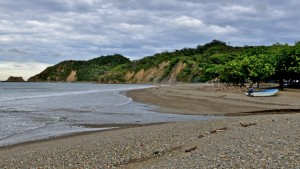
Site 2
With the Abuelo Cave unreachable and dusk falling rapidly, the guys netted nearby on a random river at something marked Sardina Puente. It was actually productive, but we got rained out early in the evening.
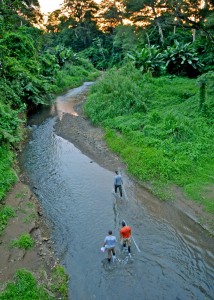
Site 3
In order to pick up a snake specimen we drove the long way around to El Jaguar, a “Monteverde” kind of place that mixes forest remnants with well-managed coffee plantation. I won’t say the trip was ruined exactly by the arrival there of 45 middle-school students on a sleep-over, but it certainly limited things like bird photography at the feeders around the main reception area. I am personally not fond of gangs of kids, not least of which since the arrival of a similar pack in Brazil wrecked my chances to see the maned wolf at the usual monastery site. With middle schoolers, one is okay, two almost too many, and three or more is a disaster of pushing, shouting, and cell phone waving.
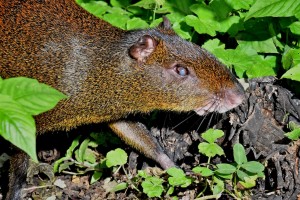
Site 4
We next went to another well-managed forest / coffee plantation, La Bastilla inside La Reserva Natural Cerro Datanlí El Diablo. This is mid-altitude cloud forest, quite scenic, on a very large and well-run estate. You need a 4wd (or high clearance, low-geared truck) to get to the lodge.
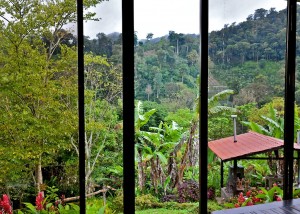
Site 5
My final in-country day was in and around Masaya Volcano and adjacent lakes.
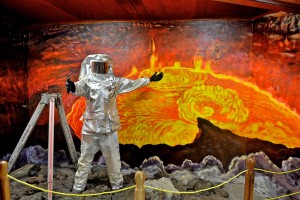
Sherman traps
So that others know what to expect, here is a sample night’s results above La Bastilla.
7 traps had Mexican Deer Mouse
4 traps were empty
2 traps had Forest Spiny Pocket Mouse
1 trap had Alfaro’s Rice Rat
Bat Photography
Jose and I shoot Nikon and so could pool lenses and share flashes. Relying on his technical skills and some borrowed tripods, we interconnected two infrared triggers, four flashes, and four cameras to try and get in-flight shots as netted bats were released in a fabric-lined box and then flew out into the night. We also tried using a “portrait” style light box for in-hand work. Three shots by me:
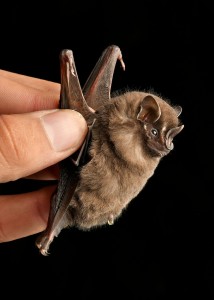
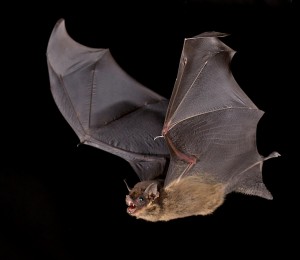
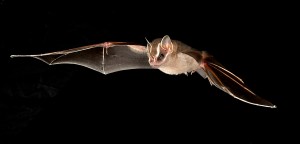
During one of our shots we were photobombed by another bat (not one of “ours”), which can be seen on the bottom left.
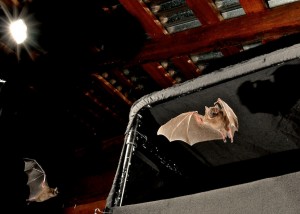
Jose with some of the gear:
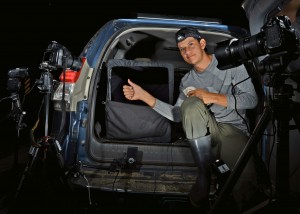
(1) bird list
Nicaragua has diverse, robust bird list. Word of advice: don’t go down that path. If you see a bird, avert your eyes, make the sign of the cross, and say loudly and clearly, “Spawn of the devil, be gone! You do not tempt me!”
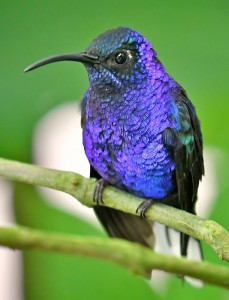
(2) mammal list (taxonomy follows Reid, Mammals of Central America, 2nd ed)
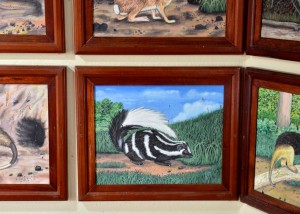
Common Opossum (Didelphis marsupialis) a few every night
Gray Four-eyed Opossum (Philander opossum) 1 Bastilla
Central American Woolly Opossum (Caluromys derbianus) 1 Escamaca, 1 Jaguar
Proboscis Bat (Rhynconycteris naso) Puente Sardina
Greater White-lined Bat (Saccopteryx bilineata) netted at Escamaca
Lesser Doglike Bat (Peropteryx macrotis) roosting in storeroom, Masaya Volcano HQ
Gray Sac-winged Bat (Balantiopteryx plicata) some Ostional I did not see, and storeroom at Masaya Volcano HQ
Greater Fishing Bat (Noctilio lepornis) lowlands over water
Lesser Fishing Bat (Noctilio albiventris) lowlands over water
Davy’s Naked-backed Bat (Pteronotus davyi) seen and ID via bat detector, Bastilla
Lesser Mustached Bat (Pteronotus personages) Puente Sardina
Tiny Big-eared Bat (Micronycteris minutia) roost tree, Escamaca
Schmidt’s Big-eared Bat (Micronycteris schmidtorum) roost tree, Escamaca
Tricolored Bat (Glophonycteris sylvestris) 1 netted at Bastilla was at 1,200 meters in a new locality; we probably will write it up for publication
Pale Spear-nosed Bat (Phyllostomus discolor) roost tree near Masaya
Greater Spear-nosed Bat (Phyllostomus hastatus) roost tree near Masaya
Common Long-tongued Bat (Glossophaga soricina) commonly netted
Gray’s Long-tongued Bat (Glossophaga leachii) netted by others, Masaya
Brown Long-tongued Bat (Glossophaga commissarisi) Jaguar
Chestnut Short-tailed Bat (Carollia castenea) Puente Sardina
Sowell’s Short-tailed Bat (Carollia sowelli) Jaguar
Seba’s Short-tailed Bat (Carollia perspicillata) seen at night roost inside well, Escamaca
Little Yellow-shouldered Bat (Sturnira lilium) Bastilla
Honduran Yellow-shouldered Bat (Sturnia hondurensis) Jaguar
Greater Fruit-eating Bat (Artibius literatus) Escamaca
Jamaican Fruit-eating Bat (Artibius Jamaicensis) commonly netted
Toltec Fruit-eating Bat (Artibius toltecus) Jaguar
Thomas’ Fruit-eating Bat (Artibius watsoni) netted by others, Masaya
Velvety Fruit-eating Bat (Enchisthenes hartii) Jaguar
Common Tent-making Bat (Urderma biblobatum) Puente Sardina
Heller’s Broad-nosed Bat (Platyrrhinus helleri) Puente Sardina
Great Stripe-faced Bat (Vampyrodes caraccioli) Jaguar
Common Vampire Bat (Desmodus rotundus) commonly netted (& one bit Jose Gab)
Black Myotis (Myotis nigricans) seen and ID via bat detector, Bastilla
Hairy-legged Myotis (Myotis keaysi) bat detector Jaguar; in-hand, Bastilla
Big Brown Bat (Eptesicus fuscus) counted via detector at Jaguar, at a site has been netted in previously
Brazilian Brown Bat (Eptesicus brasiliensis) 1 in-hand via day roost at Bastilla; very good record)
Argentine Brown Bat (Eptesicus furinalis) seen and ID via bat detector, Puente Sardina
Wagner’s Bonneted Bat (Eumops glaucinus) seen and ID via bat detector, Bastilla
Miller’s Mastiff Bat (Molossus pretiosus) Puente Sardina
Sinoloan Mastiff Bat (Molossus sinaloae) Puente Sardina
Mantled Howler (Alouatta palliata) heard and seen daily, Ostional
Variegated Squirrel (Sciurus variegatoides) lowlands and highlands (different morphs)
Deppe’s Squirrel (Sciurus deppei) Jaguar and Bastilla
Forest Spiny Pocket Mouse (Heteromys desmarestianus) a few in traps, Jaguar and Bastilla
Alfaro’s Rice Rat (Handleyomys alfaroi) 1 only, traps, Bastilla
Vesper Rat (Nyctomys sumichrasti) seen on night walk, Escamaca; heard in roof of cabin, Jaguar; seen around cabins, Bastilla
Mexican Deer Mouse (Peromyscus mexicanus) common in traps, highlands
Mexican Porcupine (Sphiggurus mexicanus) one in a roost tree that I could not get to; Jose Gab ended up carrying a ladder 3 km roundtrip to help out the fat gringo. Two more on night walks, Escamaca
Central American Agouti (Dasyprocta punctata) one coming to feeder area, Jaguar, and a few seen at night
Gray Fox (Urocyon cinereoargenteus) 1 each night on drives near Ostional
Northern Raccoon (Procyon lotor) 1 at Bastilla tried to walk across Jose’s shoes
Kinkajou (Potos flavus) night walk, Escamaca
Bushy-tailed Olingo (Bassaricyon gabbii) / 2 in same tree at Jaguar
Hooded Skunk (Mephitis macroura) common in lowlands (incl 1 during the day)
White-tailed Deer (Odocoileus virginianus) 1 at Masaya after dark; this taxa is under revision?
(3) herp list (alphabetical)
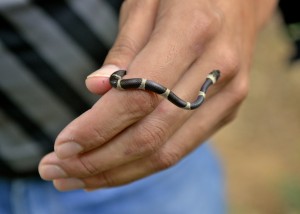
anole “sp” (El Jaguar)
black iguana (El Ostional)
cane toad (El Ostional)
cat-eyed snake “sp” #1 (caught in a house? released near El Ostional; photo per above)
cat-eyed snake “sp” #2 (seen at night in a well near El Ostional)
house gecko (El Ostional)
leopard frog “sp” (La Bastilla)
lyre snake (roadkill, Masaya Volcano road)
scorpion mud turtle (moved from road, El Ostional)
scorpion-eating snake (roadkill, El Jaguar)
snail-eating snake (roadkill, Masaya Volcano road)
Ungaliophis panamensis (a small boa; received from third party; 3rd Nicaragua record)
These lists do not rival those generated on tours run by Fiona Reid, but given my brief time slot and the bad weather and no caves, we still did okay — and more importantly, we had a grand time. (Better than being at work that week, that’s for sure.)
Charles Hood
hoodcw at gmail dot com
7 Comments
-
Venkat Sankar
Really enjoyed the bird commentary haha… And thanks for holding off on the Yapok, I’m sure we’ll get to that one soon. You got some really nice bats–Glyphonycteris is an awesome find, and Vampyrodes and all your molossids aren’t easy either. I think Glyphonycteris is one of those species that for the moment at least, breaks the rule of “there is place to find every mammal”…
It is always a pain when weather gets in the way of the best-laid plans. In 2016, I missed all my target bats and many rodents on a trip to Mexico either because of rain or its effects (rendering sites inaccessible). Thankfully, it was saved in a big way by several mega-rarities and some great food, conifers, and scenery but I still sometimes think about what could’ve been… Sitting in a cabin, staring out into the torrential rain, with 80 Sherman traps and a bunch of mistnets hurts. I guess the bright side is that it gives you a reason to go back to some lovely places 🙂
-
paul carter
Hi Charles
Nice list considering the weather etc. And good idea of Jon’s for the T-shirt; then I speed-read Venkat’s replay and thought he said he was sitting in a cabin in torrential rain with a bunch of mistresses; nearly fell off my chair. -
-
mac hunter
Thanks Charles, I am heading to Nicaragua and Jose on January 3 and your report made me check the long-range forecast; fortunately for us, much improved. And Jose is working on restoring access to some of the key sites, so fingers crossed. All these bird quips remind me of a bit of Shakespeare, “He doth protest too much.” But you all may be glad to know that I am unlikely to have the energy for both bats and serious birding so mammals and herps will be the focus.
Leave a Reply
You must be logged in to post a comment.


Jon Hall
Congratulations Charles – sounds like a great trip. And with 4 bats I haven’t seen too. Nicaragua (and Jose) – amazing